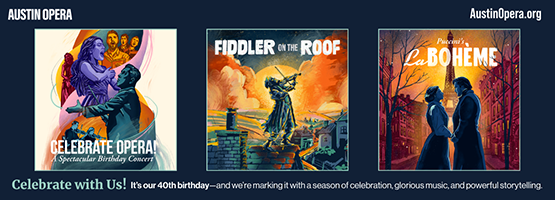The ability to engage simultaneously in concentration and distraction allows Suzanne Bocanegra to revel in intense observation while getting lost in an image, which is exactly what she does magnificently in Honor, an Artist Lecture co-performed by Bocanegra and actor Lili Taylor.
At one point Bocanegra shows us a slide of one of Jan Brueghel’s overstuffed flower paintings. In the next slide, we get a glimpse inside Bocanegra’s creative mind. She had been lost in the crowded imagery and decided to paint just one petal. Before long the vase of densely packed flowers had been entirely deconstructed. She had meticulously painted each individual petal, arranging them on the wall in the same composition as the original work, creating an abstraction that blows the mind.
Bocanegra has mastered the art of wandering and the process of distillation. Over the last decade and more, she has also found an ideal medium to impart the aura of these original explorations of ideas, images, and memories through her singular “artist lectures,” straddling the genres of lecture, memoir, performance art, storytelling, and theater.
In each, a professional actor (Paul Lazar, Frances McDormand, and Lili Taylor) stands in front of the screen in the spotlight, channeling the artist’s voice and spirit, while Bocanegra, dimly lit, sits behind a desk to the side of the stage, reading her script quietly into a microphone connected to the actor’s earpiece. It took many years for Bocanegra to fine-tune this framework. The audience is in on it. The performance is structured just like a real artist lecture with hundreds of slides being presented by the artist, except we know the “artist” is an actor standing in for Bocanegra. And the “lecture” that reads as a real lecture is a performance of a lecture. The artist is telling her own stories in real time, using the images as a guide through the maze of her own mind. Our eyes and ears are focused on the actor, who is and is not her. This bit of cognitive disruption is crazy meta and it works. We are more attentive, more tuned in to the moment, seduced by both its odd theatricality and absurdity.
At 25 feet wide and 19 feet tall, Honor commands attention as the largest tapestry in the MET’s collection. Designed by Flemish artist Bernard van Orley in 1520 and woven in Brussels between 1525-1532, it shows 69 figures demonstrating the concept of honor, arranged in a crowded tableau vivant, with the central personification of Honor receiving a laurel crown from Virtue and Victory. The tapestry certainly lends itself to deep looking, associative meandering, and tangential research, and Bocanegra has a ball with it. But she never diverges so far as to lose the intention of her piece, which is a meaningful inquiry into the concept of honor.
We find out through Bocanegra’s own text that she is drawn to the “more is more” aesthetic of Renaissance tapestry. She likes things that are “visually thick” and finds it reassuring that there is “plenty to look at.” And like a library, “you’ll never run out of things to think about.”
The “lecture” begins with the history of the tapestry itself. The “artist” introduces us to its owner Cardinal Erard de la Marck, advisor to the Holy Roman Emperor Charles V, who found honor and fame in waging war. Thereafter she contemplates life in the 16th century, war and famine, witches and the Inquisition, the spectacles of the “joyous entry” and the “auto-da-fé,” two sides of the same coin in the state-sponsored theatrical displays of ultimate honor and ultimate shame.

1 ⁄5
Lili Taylor in Suzanne Bocanegra’s Honor. Photo by Jay Clark.

2 ⁄5
Suzanne Bocanegra in Honor. Photo by Jay Clark.

3 ⁄5
Shepherd School of Music students Alejandra Wagon, Hanna Frampton, Camille Robles, Stephanie Chee, Katherine Dobbs, Lindsay Feldman, and Sofia Pellegrini in Suzanne Bocanegra’s Honor. Photo by Jay Clark.

4 ⁄5
Shepherd School of Music students Alejandra Wagon, Hanna Frampton, Camille Robles, Stephanie Chee, Katherine Dobbs, Lindsay Feldman, and Sofia Pellegrini in Suzanne Bocanegra’s Honor. Photo by Jay Clark.

5 ⁄5
Lili Taylor in Suzanne Bocanegra’s Honor. Photo by Jay Clark.
We witness the modern tableau vivant as displayed in the Pageant of the Masters in Laguna Beach, CA, and the garishly excessive costumes “honoring” important women in history at the Texas Rose Festival. The origin story of home economics, the history of the Girl Scouts with their badges and visual signs of honor, the etymology of the word spinster, the honor code in West Side Story—somehow it all comes together.
Unlike her previous “artist lectures,” Honor does not begin with a story from Bocanegra’s life, yet poignant personal narrative threads wind through the entire piece, especially those connecting to Bocanegra’s mother, who passed away in 2020. In one of the final slides, she is seen sitting in a chair crocheting “scrubbies,” handmade pot scrubbers that are bestsellers at her church crafts fair. Along with the scrubbies, Bocanegra had found her childhood dolls of Hansel and Gretel, her Girl Scout sash, and her Daisy Low comic books, all of which make appearances in the piece at various junctures.
What seems like stream-of-consciousness thoughts-in-motion is structured to keep the audience rapt with attention. The myriad images are arranged and juxtaposed for maximum effect, whether it be laughter (of which there were plenty from this audience), profound thought, or utter incredulity. The lines, deftly delivered by Taylor, feel comfortable and well-paced. Witty punchlines land at the right moment and the audience responds with appreciation. We feel a warm rapport with the “artist” and the entire performance becomes a kind of feast for the senses. Even the mistakes, when the text is misheard (“hat” not “head”), ground us in that moment of authenticity.
Bocanegra unpacks many ideas throughout the arc of the piece, the illusive and abstract concept of honor, the paradox of authenticity in performance, the relationship between craft and gender, and much more. She makes careful observations along the way which she shares with her audience without much commentary. She wanders down meandering paths, following each for a time, then fork onto other paths, weaving a tapestry of her own thoughts and stories, laying down each thread without worrying about where it might lead. We follow her on a rather trippy ride. And somehow through the dense forest of all that information, we emerge with a sense of clarity of the connectedness of humanity.
In a cathartic moment, the image fades, and a very real ensemble of singers from the Shepherd School of Music, dressed in marvelously strange costumes designed by Bocanegra, appears behind the screen in a stunning tableau vivant, singing the 16th century Spanish villancico “Ríu Ríu Chíu” (incidentally, the Monkees sang this song on their Christmas show in 1967). Quietly, Bocanegra and Taylor walk behind the screen, donning costumes and posing as figures in the tableau, completing the tapestry.
—SHERRY CHENG




